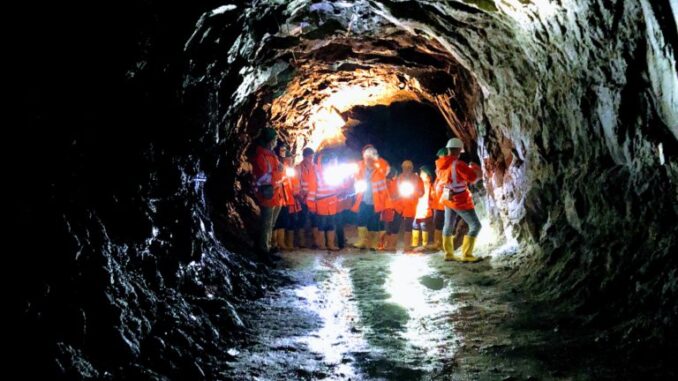
The company that owns Europe’s first fully permitted lithium mine made its debut with a bang on the Nasdaq this week, as European Lithium (ASX: EUR) merged with Sizzle Acquisition Corp to create Critical Metals Corp (Nasdaq: CRML). After Sizzle stock saw a 120% surge in after hours trading Tuesday, Critical Metals debut on the Nasdaq Wednesday morning fizzled, tanking 38%.
On Friday by midday, CRLM was up over 10%. European Lithium shareholders still have a $1.2 billion stake in the Wolfsberg lithium project in Carinthia, Austria, set to become the EU’s only producing battery-grade lithium mine by 2027, according to Critical Metals executive chairman Tony Sage.
Sage is unfazed by both the drop in company shares during Wedneday’s debut, and by the current lithium price lows.
The company has secured supply agreements with BMW, and a deal ith Obeikan Investment Group to build a lithium hydroxide plant in Saudi Arabia. The 50:50 joint venture will be geared towards constructing, commissioning and operating the plant for the conversion of lithium spodumene concentrate.
“It’s a strategic plan. Wolfsberg is going to go through a two year construction phase — the next step is for finalising the Saudi deal, we expect by the end of March, ” Sage told MINING.com in an interview.
Sage is also eyeing rare earths and uranium projects, both brownfield and greenfield in the EU. European lithium already has a 7.5% stake in the Tanbreez rare earth project in Greenland, majority owned by Rimbal. With a 28.2 million tonne TREO resource, Tanbreez is ranked biggest rare earth project in the world.
Following construction at Wolfsberg by 2026, Critical Metals has agreed to supply BMW by 2027.
“I think if you’re in production now, you’re in a little bit of a problem, but we’re going to come out of the construction phase at the right time, supplying BMW. If you look at all the forecasts of every research house — It’s going to be a squeeze around that time, so prices should be up,” Sage said.
European Lithium produced a definitive feasibility study for Wolfsberg in 2023, but Sage pointed out the construction of the hydroxide plant now may be cheaper than what was in the original DFS and the OPEX numbers have improved.
Wolfsburg is fully permitted in perpetuity as long as work is ongoing, slated to be the next producing lithium mine in the EU, and the first to produce battery grade.
The pivotal role of lithium-ion batteries in the electric-vehicle revolution is driving the construction of about half a dozen refinery projects across Europe. At the same time, the strategic importance of those developments has been underlined by the European Union’s initiative to cut its dependence on China for critical raw materials. Europe’s only current lithium supply is from Portugal, but it is used only in ceramics.
Rio Tinto’s plans for a $2.4 billion Jadar lithium project in Serbia fell flat when licences were revoked in January 2022 after protests over environmental concerns about the planned mine. Serbia Serbian Prime Minister Ana Brnabic said she does not see a chance of reviving the project.
“We’re lucky that we’ve got our permit in place and that the Austrian Government is keen on our project,” Sage said. “It’s just a dichotomy when you’ve got the head bodies saying ‘we want this’ and then local governments are not allowing permits to happen.”



